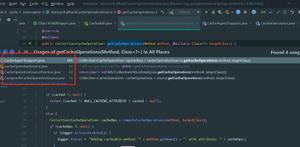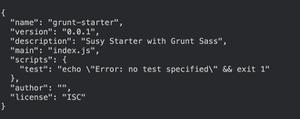Spring 构造函数注入和Setter方法注入及集合注入
本文内容纲要:
- 1.简介- 2. 构造函数注入
- 3. Setter方法注入
1.简介
Spring的依赖注入方式大体上可以分为三种:
- 构造函数注入
- Setter方法注入
- 方法注入 (lookup-method注入和replace-method注入)
本篇我们先分析构造函数注入和Setter方法注入,并简介一下Spring中的集合属性,Properties属性,数组属性等注入,方法注入稍微复杂且不常用,我们留在下篇分析。
2. 构造函数注入
新建HelloApi接口
package com.lyc.cn.day04;
/**
@author: LiYanChao
@create: 2018-09-05 11:49
*/
public interface HelloApi {
void sayHello();
void sayListNames();
void saySetNames();
void sayArrayNames();
void sayMapNames();
void sayPropertiesNames();
}
新建HelloImpl实现类
package com.lyc.cn.day04;
import org.springframework.util.CollectionUtils;
import java.util.*;
/**
@author: LiYanChao
@create: 2018-09-05 11:49
*/
public class HelloImpl implements HelloApi {
/** 姓名 **/
private String name;
/** 年龄 **/
private int age;
/** 注入List集合 **/
private List
listNames; /**注入Set集合/
private Set
setNames; /** 注入Properties **/
private Properties propertiesNames;
/** 注入Map集合 **/
private Map<String, String> mapNames;
/** 注入数组 **/
private String[] arrayNames;
/** 无参构造函数 **/
public HelloImpl() {
}
/**
- 构造函数
- @param name 姓名
- @param age 年龄
*/
public HelloImpl(String name, int age) {
this.name = name;
this.age = age;
}
/**
- 打印数组集合
*/
public void sayArrayNames() {
System.out.println("注入数组-->");
if (arrayNames != null && arrayNames.length > 0) {
for (int i = 0; i < arrayNames.length; i++) {
System.out.println(arrayNames[i]);
}
}
System.out.println();
}
/**
- 打印Map集合
*/
public void sayMapNames() {
if (null != mapNames && mapNames.size() > 0) {
System.out.println("注入Map集合-->");
for (Map.Entry<String, String> entry : mapNames.entrySet()) {
System.out.println("key= " + entry.getKey() + " value= " + entry.getValue());
}
System.out.println();
}
}
/**
- 打印Properties属性
*/
public void sayPropertiesNames() {
if (null != propertiesNames) {
System.out.println("注入properties属性-->");
System.out.println(propertiesNames.get("name"));
System.out.println(propertiesNames.get("age"));
System.out.println();
}
}
/**
- 打印List集合
*/
public void sayListNames() {
if (!CollectionUtils.isEmpty(listNames)) {
System.out.println("注入List集合-->");
for (String string : listNames) {
System.out.println(string);
}
System.out.println();
}
}
/**
- 打印Set集合
*/
public void saySetNames() {
if (!CollectionUtils.isEmpty(setNames)) {
System.out.println("注入Set集合-->");
Iterator
iterator = setNames.iterator(); while (iterator.hasNext()) {
System.out.println(iterator.next());
}
System.out.println();
}
}
@Override
public void sayHello() {
System.out.println("大家好, 我叫" + getName() + ", 我今年" + getAge() + "岁了");
}
public String getName() {
return name;
}
public void setName(String name) {
this.name = name;
}
public int getAge() {
return age;
}
public void setAge(int age) {
this.age = age;
}
public List
getListNames() { return listNames;
}
public void setListNames(List
listNames) { this.listNames = listNames;
}
public Set
getSetNames() { return setNames;
}
public void setSetNames(Set
setNames) { this.setNames = setNames;
}
public Properties getPropertiesNames() {
return propertiesNames;
}
public void setPropertiesNames(Properties propertiesNames) {
this.propertiesNames = propertiesNames;
}
public Map<String, String> getMapNames() {
return mapNames;
}
public void setMapNames(Map<String, String> mapNames) {
this.mapNames = mapNames;
}
public String[] getArrayNames() {
return arrayNames;
}
public void setArrayNames(String[] arrayNames) {
this.arrayNames = arrayNames;
}
}
新建day04.xml
新建MyTest测试类
package com.lyc.cn.day04;
import org.junit.After;
import org.junit.Before;
import org.junit.Test;
import org.springframework.beans.factory.xml.XmlBeanFactory;
import org.springframework.core.io.ClassPathResource;
/**
@author: LiYanChao
@create: 2018-09-05 11:49
*/
public class MyTest {
private XmlBeanFactory xmlBeanFactory;
private HelloApi helloApi;
@Before
public void initXmlBeanFactory() {
System.out.println("========测试方法开始=======\n");
xmlBeanFactory = new XmlBeanFactory(new ClassPathResource("day04.xml"));
}
@After
public void after() {
System.out.println("\n========测试方法结束=======");
}
/**
构造函数注入
*/
@Test
public void testConstructorDI() {
helloApi = xmlBeanFactory.getBean("helloBeanByIndex", HelloImpl.class);
helloApi.sayHello();
helloApi = xmlBeanFactory.getBean("helloBeanByType", HelloImpl.class);
helloApi.sayHello();
helloApi = xmlBeanFactory.getBean("helloBeanByName", HelloImpl.class);
helloApi.sayHello();
}
}
输出
========测试方法开始=======
大家好, 我叫小张, 我今年3岁了
大家好, 我叫小李, 我今年4岁了
大家好, 我叫小王, 我今年5岁了
========测试方法结束=======
可以看到,构造函数也分为了三种类型指定参数索引,指定参数类型,指定参数名称三种方式,当我们指定任意一种方式时,Spring会自动帮我们识别对应的构造函数,并将值进行注入,这一部分的实现在Spring源码中的实现还是很复杂的,会在接下来的博客中进行详细分析。
3. Setter方法注入
Setter方法注入是最简单也是最基础的一种注入方式,在本小节我们会分析普通属性注入,数组属性注入,List属性注入,Map类型属性注入,Properties类型属性注入等方式
修改day04.xml增加bean配置信息
张三 李四 王五 <!--注入Set集合--><property name="setNames">
<set value-type="java.lang.String" merge="true">
<value>张三</value>
<value>李四</value>
<value>王五</value>
</set>
</property>
<!--注入Map集合-->
<property name="mapNames">
<map key-type="java.lang.String" value-type="java.lang.String">
<entry key="name" value="小明"/>
<entry key="age" value="3"/>
</map>
</property>
<!--注入数组-->
<property name="arrayNames">
<array value-type="java.lang.String">
<value>张三</value>
<value>李四</value>
<value>王五</value>
</array>
</property>
<!--注入Properties-->
<property name="propertiesNames">
<props value-type="java.lang.String">
<prop key="name">小明</prop>
<prop key="age">3</prop>
</props>
</property>
原文地址:https://blog.csdn.net/lyc_liyanchao/article/details/82428726
本文内容总结:1.简介,2. 构造函数注入,3. Setter方法注入,
原文链接:https://www.cnblogs.com/w2116o2115/p/12706120.html
以上是 Spring 构造函数注入和Setter方法注入及集合注入 的全部内容, 来源链接: utcz.com/z/295997.html









